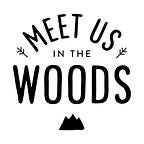The Bison are Back
Emily and I arrived in Banff National Park on January 31, 2017, just one day before the bison were airlifted into the park. After more than a century of absence from Banff, 16 plains bison were reintroduced by Parks Canada into a small lot on the eastern edge. The possibility of coexisting with the largest land mammal in the Americas piqued our interest. We watched eagerly for news articles, twitter posts, and video clips as we imagined the arrival of these new neighbors.
We had long anticipated this trip. Our two week artist residency at the Banff Arts Centre was a chance to collaborate over our interest in the wilderness. We’d observe the nature around us, participate in it, and think about the future. Our goal was to create a body of illustrated pieces to share our interest with our communities.
Nestled at the base of Tunnel Mountain and a few miles from town, the Banff Centre was the perfect home base for our project. Wildlife was everywhere. Elk and mule deer were a common presence on campus. If we were lucky, we would even catch a few animals interacting, like a coyote following some deer into campus, or a raven chasing a bald eagle! But our curiosity about the bison reintroduction compelled us to think about what we weren’t seeing. The bison is a massive animal, both in stature and environmental impact. A free-roaming herd would widen meadows, fertilize grasses, provide food for predators and resources for insects and birds.
It’ll take years (and many hurdles) before bison expand into a significant and accessible portion of the park. The pilot herd will have to stay disease-free and respond positively to food and behavior conditioning through several stages of release. They will also have to stay within a hazing zone for the first 5 years, a condition that local ranchers and landowners will be particularly vigilant of. Nevertheless, what would happen if someday bison were to roam freely in Banff National Park?
On our daily hikes, we observed the absence of bison all around us. Would the branches of Tunnel Mountain’s lodgepole pine someday be covered in bison fur as summer approaches, as the animals shed their winter coats? Would we soon be spotting bison prints in the snow alongside our own snowshoe tracks? Or would we be dodging large piles of bison dung on valley trails, revitalized as new homes for insect populations and as nutrients for grass production?
It turns out that bison did once inhabit Banff National Park. Tunnel Mountain was once called Sleeping Buffalo Mountain by aboriginal people. They coexisted with bison, hunting them for clothing and food. What happened for all of this to disappear?
I read through every news article about the bison reintroduction I could find, and almost all used a single word: “overhunting.” The aboriginal people practiced subsistence hunting, only taking what they needed for food and clothing. And yet, the bison were nearly overhunted into extinction? These two facts didn’t seem to match up and so I kept reading.
There’s actually a pretty complicated history between the Canadian government and the aboriginal people, with the bison caught in-between. Here’s what I found: In the mid 1800s, the Canadian government requisitioned aboriginal land to create national parks for sport hunting and tourism. The government also restricted these aboriginal groups from hunting bison for subsistence. After centuries of hunting and gathering, they were suddenly left without a way to support themselves.
Meanwhile, the lucrative bison robe trade meant an increasing demand for hunters. White hunters tended to be far more destructive than their aboriginal counterparts, who had turned to the bison trade in their struggle to survive in this new economy. Together, both parties ended up bringing the animal to near extinction.
Disease was another large factor. Once the Canadian government realized that protected areas were needed to rehabilitate bison herds, Buffalo National Park and Wood Buffalo National Park were created. But poor grazing land and overpopulation led to disease among plains bison at Buffalo National Park. The infected plains bison were brought to Wood Buffalo National Park, which held a different species of bison. The result was widespread disease and the hybridization of the two species. Both bison species almost entirely collapsed.
In fact, the 16 genetically pure plains bison transported to Banff just this month are descendants of a small group that evaded capture and relocation to Buffalo National Park a hundred years ago, thus avoiding the terrible fate of their fellow plains bison.
It’s a sad history. It’s hard to believe that Canadian national parks were originally created for sport hunting and tourism. It’s also hard to imagine that a keystone species such as the bison has been gone for so long.
But now, the bison have been given a small chance! With this reintroduction program now a reality, I am free to imagine the changes the bison might bring. I can imagine a padlock on the eastern edge of Banff inhabited by a small but growing herd of bison. In 16 months I can imagine these bison being released to a pasture. And in 5 years I can imagine the possibility of bison roaming even further throughout Banff.
Even at this moment, park visitors could theoretically reach the bison in a two day backpacking hike. If the test program goes well, visitors may not even need to hike to come across a bison.
With the dominant grazer back in town, Banff’s grasslands would become richer and more diverse. Visitors like myself would have the honor of coexisting with an animal that has inhabited this land longer than I can even imagine. And aboriginal people could reestablish their long-lost cultural connection to bison.
I hope to one day see these changes as a reality. But for now, I’ll keep an eye out for more news of these 16 bison.
by Julia Kuo
